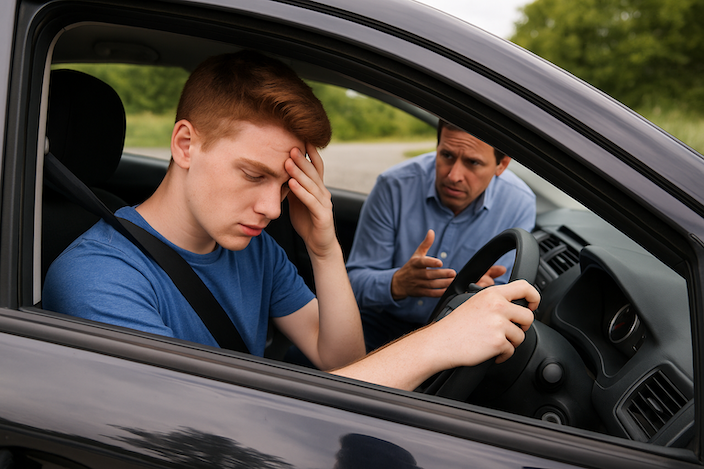Teen Driver Accidents: Maine Injury Claims Explained

For many Maine families, the day a teenager gets their driver’s license is both exciting and nerve-wracking. Parents celebrate their child’s independence but also worry about safety. Unfortunately, accidents involving teen drivers happen all too often. According to national statistics, drivers aged 16–19 have higher crash rates than any other age group. When a Maine teenager is involved in a car accident, families quickly ask: Who is responsible for the damages, and how does insurance work?
Understanding liability and insurance rules can help parents prepare for the unexpected and protect their family’s financial future.
Parents May Be Liable for Teen Drivers
In Maine, teenagers can legally drive on their own once they obtain a license. But parents and guardians often remain financially responsible when a teen driver causes an accident. This liability usually comes from insurance policies rather than direct out-of-pocket payments.
When a teen lives at home, parents typically list them on the family’s auto insurance policy. That means the policy covers the teen’s driving just like it covers other household members. If the teen causes an accident, the insurance company will pay damages to injured parties up to the policy limits.
However, if the accident causes damages beyond those limits, parents may be personally liable for the remaining costs. That is why many families choose higher policy limits or umbrella insurance coverage when adding a teen driver.
How Insurance Applies to Teen Accidents
If your teenager causes a crash in Maine, several layers of insurance may come into play:
- Liability Coverage
Maine law requires all drivers to carry liability insurance. This coverage pays for injuries and property damage the at-fault driver causes. For teens, that usually means the family policy steps in. - Medical Payments Coverage (MedPay)
Many Maine policies include optional MedPay. This coverage can help pay medical bills for your teen after a crash, regardless of who was at fault. - Uninsured/Underinsured Motorist Coverage (UM/UIM)
If your teen is partially at fault but another driver without adequate insurance also contributed to the crash, UM/UIM coverage may apply. - Umbrella Policies
Some families carry umbrella insurance, which provides extra liability coverage beyond the limits of the auto policy. This can be especially valuable in serious accidents involving injuries.
Comparative Negligence in Maine
Maine follows a modified comparative negligence rule. This means fault can be shared among drivers. If your teen is found mostly at fault, your family’s insurance pays for damages. But if another driver shares responsibility—for example, by speeding or failing to yield—the financial responsibility may be divided between the parties.
This rule matters because it can reduce your teen’s share of liability if evidence shows another driver also contributed to the accident. Insurance companies often dispute fault in teen driver crashes, which makes thorough investigation critical.
Common Scenarios With Teen Drivers
Teen drivers often cause accidents due to inexperience or distraction. Some common scenarios include:
- Rear-ending another car due to delayed reaction time
- Collisions caused by distraction from phones, music, or friends in the car
- Failing to yield at intersections or stop signs
- Losing control in bad weather or on rural Maine roads
While these scenarios may sound typical, they can result in severe injuries and high costs. Victims may claim medical bills, lost wages, and pain and suffering, which can add up quickly. That’s why insurance protection is so important.
Protecting Your Family Financially
When you add a teen driver to your policy, your insurance premiums almost always rise. While costly, higher coverage limits provide critical protection. Families may also consider:
- Raising liability coverage beyond Maine’s minimum requirements
- Adding umbrella insurance for major accidents
- Encouraging defensive driving courses to reduce risk and sometimes lower premiums
- Setting clear rules about phone use, curfews, and number of passengers
Proactive steps reduce the risk of accidents and protect families financially if one occurs.
What to Do After an Accident
If your teen is involved in an accident in Maine, you should:
- Make sure everyone receives medical care. Safety always comes first.
- Report the accident to police. An official report helps clarify fault.
- Notify your insurance company promptly. Delays may complicate coverage.
- Gather evidence. Photos, witness names, and police reports can help resolve disputes about liability.
Why Legal Guidance Matters
If you suffered injuries in a crash caused by a teenager, pursuing compensation can be more complicated than it seems. Insurance companies may argue over coverage, downplay the seriousness of your injuries, or attempt to settle for far less than you deserve. Because teen drivers are usually covered under their parents’ insurance, multiple layers of liability and policy limits may come into play. Without legal help, you risk being left with unpaid medical bills, lost wages, and long-term financial strain.
Call a Maine Personal Injury Lawyer
Being injured by a teen driver can turn your life upside down. You should not have to fight insurance companies alone while trying to recover from your injuries. At Peter Thompson & Associates, we represent injured people across Maine in cases involving teen drivers and other negligent motorists. We investigate the crash, identify all sources of compensation, and aggressively negotiate with insurers so you can focus on healing.
Call us today for a free consultation and learn how we can help you secure the justice and compensation you deserve.

